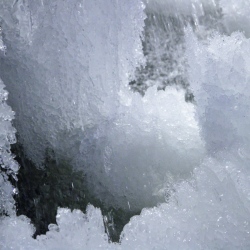
West Antarctica continues to lose ice to the ocean and this loss appears to be accelerating, according to new data from Europe’s Cryosat spacecraft. The dedicated polar mission finds the region now to be dumping over 150 cubic km of ice into the sea every year.
It equates to a 15% increase in West Antarctica’s contribution to global sea level rise. Cryosat was launched in 2010 with a radar specifically designed to measure the shape of ice surfaces.
And the instrument’s novel design, scientists believe, is enabling the European Space Agency satellite to observe features beyond the capability of previous missions. The new study, presented here in San Francisco to the American Geophysical Union (AGU) Fall Meeting, confirms the usual suspects to be involved in the increased ice loss.
They are Pine Island, Thwaites and Smith Glaciers. These major glaciers and their associated tributaries drain the interior of West Antarctica, taking its mass into the Amundsen Sea.
The ice near to their grounding lines – the places where the ice streams lift up off the land and begin to float out over the ocean – is now thinning by between four and eight metres per year.
